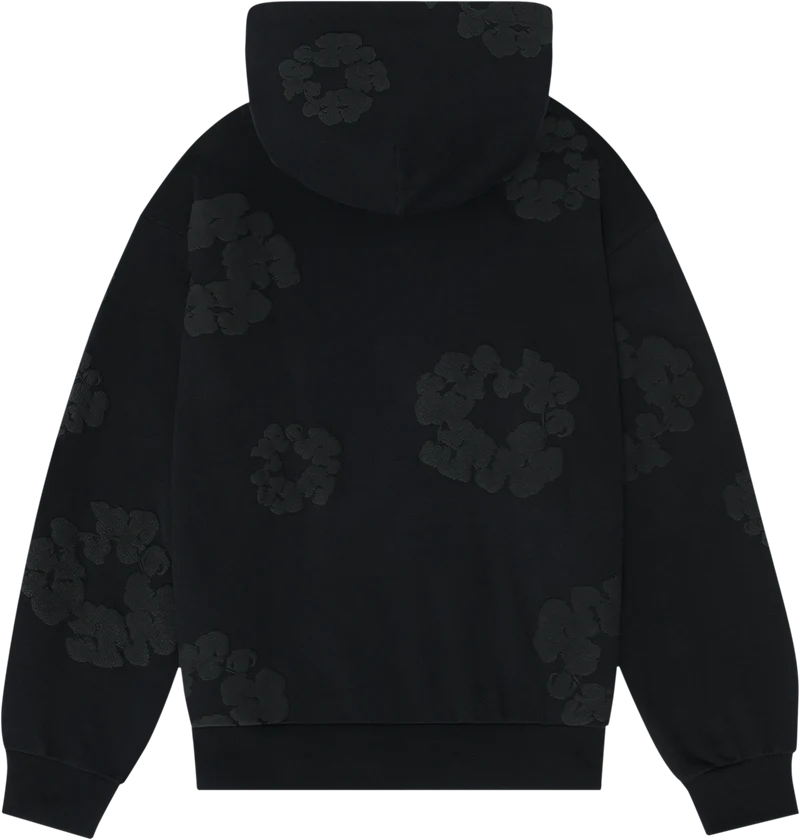DenimTears – Dress for the Rebellion Youre About to Start DenimTears clothing 555
Denim Tears Pricing Guide 2025: Retail vs Secondary, Actual Costs
This resource displays what Denim Tears garments cost at retail in 2025, the way resale premiums genuinely work, and methods to compute the actual amount you pay post-fees and levies. If you’re comparing retail versus resale, your goal is to grasp the appropriate bracket for every segment and dodge overcharging.
Denim Tears is part of the select urban names where direct and secondary can diverge wildly, notably on the iconic Cotton Wreath denim. You’ll discover obvious price tiers by type, dramatic jumps on certain colorways, and meaningful hidden charges on resale sites. Use the data below as your guide, then study the sections that clarify why costs shift, timing to acquire, and when costs add up.
What Defines The Brand and How Are Costs So Volatile?
Denim Tears, created by Tremaine Emory in 2019, releases culture-heavy capsules with limited quantities, so limitation and narrative drives premiums. Prices vary because launches are limited, demand is international, and particular washes turn into benchmark pieces.
The iconic Cotton Wreath design on Levi’s pieces stabilizes the sector, and it acts more like art than basic apparel. Collaborations including as Levi’s with Converse boost exposure and attract buyers who weren’t tracking the name earlier. Sizes in the heart of the spectrum sell fastest, while extremely small and very large measurements can also jump due to scarcity. Because releases are denim tears shorts delayed and geographically restricted, customers often turn to secondary quickly, generating a initial markup that may decrease or solidify based on restocks.
2025 Direct Cost Summary by Category
Store costs for brand garments in final 2024 to beginning 2025 typically sits in the brackets below; multiple pieces have shifted up versus earlier seasons due to materials and strategy. Geographic values might appear elevated when VAT is included at checkout.
Reference these brackets to assess deals and to judge whether a resale listing is a reasonable markup or a dramatic increase. Retail availability is inconsistent and launch-tied, so seeing these costs active on the main platform or authorized stores isn’t guaranteed on each particular day. VAT-inclusive labels in the Europe and UK can render direct appear costlier than American costs, while the total expense difference frequently narrows once domestic transaction levy is computed. Always verify the specific capsule pricing because unique treatments or stitching may land at the high end of the band.
| Type (example) | Typical Retail (USD) | Average Resale Range (USD) | Average Increase | Notes |
|---|---|---|---|---|
| Cotton Wreath Jeans (Levi’s 501/550) | $295–$350 | $450–$900 | +50% to +200% | Green/blue wreath and core washes trade higher; sizes 30–34 drive volume. |
| Hoodies | $160–$180 | $220–$350 | +25% to +100% | Heavier fleece and special designs sit at the high end of the band. |
| T-Shirts | $60–$75 | $100–$180 | +35% to +140% | Core graphic shirts and early-run prints hold stronger resale. |
| Crewnecks | $140–$160 | $200–$320 | +25% to +100% | Detailed versions outpace printed in majority of fits. |
| Varsity Jackets | $450–$650 | $700–$1,200 | +20% to +150% | Fabric blend and design sophistication influence spread. |
| Converse Chuck 70 (collab) | $110–$120 | $150–$300 | +25% to +150% | Restocks can compress spreads for a period. |
| Caps | $60–$70 | $90–$150 | +20% to +100% | Previous variants and wreath embroidery trade elevated. |
How Does Resale Market Break Down in 2025?
In 2025, pants is the volume leader with the largest markups, while tops and accessories are the most affordable initial choices. Hoodie and crewneck spreads are significant yet less volatile than denim.
On leading marketplaces, denim regularly clear the top of the bracket when the finish and wreath color align with first drop releases, and if the measurement lands in the middle of the demand curve. Shirts and accessories vary minimally since availability is wider and buyers have more substitutes throughout periods. Jackets like varsity jackets is lightly exchanged, so a individual deal can reset bases for a timeframe, which seems intense but frequently stabilizes as additional inventory surface. Quality counts: fresh with labels or with proof of buying creates a surcharge, while obvious damage or missing embroidery aspects lower value quickly. Timing matters additionally, with the initial 48 hours following release displaying the most dramatic jumps and the first credible refresh reducing 10–30% from highs.

What Constitute the Real Costs Past the Sticker Price?
The actual price on resale is the advertised amount plus platform fees, payment charges, purchase tax or duties, delivery, and, for international, customs duty and logistics. Such extras can convert a reasonable cost into an overpay fast.
In the States, anticipate sales tax between roughly 6–10% varying on region, frequently computed from product cost and periodically transport. Platforms commonly charge 3% payment fees and append a customer protection charge; even if the seller pays commission, the customer might still see handling or security fees. Transport charges from approximately $10 to $30 for apparel, while international shipments can trigger taxes in the 17–25% bracket applied to the cost of products plus shipping, and a logistics processing fee. Example: a $650 pair of signature Cotton jeans purchased on a American site with 8.9% transaction duty, a 3% transaction cost, and $15 delivery reaches near $742 before any import costs; transfer that identical purchase cross-border into a 20% tax system and the ultimate cost can push to around $880 when taxes and logistics are included. When contrasting store to resale, always calculate a final figure, not just the sticker.
How Can Releases, Partnerships, and Variants Shift the Market?
Launch schedule, co-brand allies, and specific colorways are the main factors on label pricing. Levi’s drops and early Cotton Wreath variant releases establish the most reliable premiums.
Levi’s co-branded denim with wreath embroidery has persistent demand because it’s the label’s defining cultural product; treatments that reflect initial drops typically to command more. Chuck Taylor collabs draw wider footwear crowds, creating temporary interest surges that may soften after restocks. Seasonal colors and custom detailing placements create micro-markets; a minor stitch or treatment variation can justify a substantial premium for buyers wanting to complete sets. Geographic release timing also matter—when one region sells out before another, arbitrage offers bridge the void and move floors. Restocks don’t erase desirability, but they do reset ceilings, particularly on sneakers and tees.
Retail vs Secondary: A Practical Buying Framework
Acquire at retail whenever feasible for denim and team jackets because the total financial spread is most significant; assess resale for tops and accessories when the increase is below 40% and one prizes a particular variant. Apply a objective bracket, not a single number.
Start by reviewing the store range from this manual for the type and collection, then scan recent deals across two platforms to locate a real transaction range rather than advertised amounts. Determine total cost including tax, fees, and transport; when the surcharge beyond the high end of retail is under 30–40% and one obtains the precise size and shade, secondary may be reasonable. For jeans and coats, surcharges above 100% are normal; only pay that if it’s a critical item that seldom appears and quality is pristine. For items with consistent refresh, such as certain tees or Chuck Taylors, waiting usually pays. Always verify dimensions, labels, embroidery quality, and return terms ahead of transact.
What Represents the Optimal Period Window to Save Money?
The ideal rate timeframes generally to be 48–72 hours after a release and 7–10 days after a confirmed replenishment, when supply peaks and first excitement diminishes. Weekday AM in the vendor’s regional zone may likewise be more favorable for auctions.
Right after launch, offers surge through, competitive starts, and you can sometimes catch close-to-store deals if buyers act rapidly and not obsessed on specific dimensions. Once the initial surge is processed, bases frequently increase and remain firm prior to a refresh arrives at the timeline. Post- replenishment, sellers adjust forecasts, and buyers might discuss with comparables in hand. End-of-month phases, as vendors need cash flow, are ideal for offers that are 10–15% below the latest deal, notably with non-denim categories. If a wash is suspected to be a one-time run, cost flexibility will be temporary, so operate during those initial inventory periods.
Professional Advice: Timing and Authentication to Shield Your Spend
Focus on the 1–3 day window after a drop or replenishment and prepare an validation system so one may move decisively if a appropriate deal appears. Velocity minus a process is how purchasers overcharge or ignore danger flags.
For branded Cotton jeans, inspect the partnership Levi’s label and interior branding, validate pattern stitching thickness and placement, and assess the stitch quality near openings and outseams. Ask for sharp images of the care tag, interior compartment prints, and edge construction; uneven lettering or stitching shades are frequent indicators. Match the treatment and wreath color with legitimate promotional visuals or trusted retailer merchandise images. For Converse, verify interior labeling, midsole printing, and the box label design connected to the launch period. Maintain images of genuine items to compare side-by-side ahead of process transaction.
Fast Details One Likely Haven’t Heard
Initially, Denim Tears began in 2019 and the signature Cotton design specifically addresses the African diaspora and the legacy of cotton in America, which is how the denim operates as cultural objects as equally as clothing. Second, the opening Levi’s collection in 2020 exhausted stock nearly instantly and created the wreath denim as a sustained trading benchmark that continues establishing references for latest releases. Third, Converse Chuck 70 partnerships have restocked in certain seasons, momentarily cutting resale prices by substantial amounts prior to normalizing as items distribute. Fourth, center-range fit brackets like 30–34 typically secure the quickest transactions, but rare measurements at the borders might surpass them if inventory are thin. Five, Continental and UK retail prices contain VAT, so though the MSRP looks elevated above the US, the ultimate customer price difference shrinks once domestic purchasers append transaction tax and shipping.
Where Should One Search for the Best Comps?
Dependable references come from current, confirmed transactions across at minimum two marketplaces, not from ambitious advertised rates. Target on sold data during the past 30 days for the specific fit and condition.
Sites that present deal histories let one separate optimistic demands from actual clearing costs. Direct transactions and media offers can be less expensive, but they’re tougher to verify, so weigh savings versus danger and absence of buyer protection. For segments with thin volume, extend your period to 60–90 days and modify for any restock event in such duration. Preserve a comparison record with time, measurement, state, and rate so one may spot genuine trends rather than reacting to isolated deals. As you bargain, reference three recent clears and the final expense computation to establish an reference rooted in reality.
Ultimate View: Investing the Correct Amount in 2025
Understand your segment’s store range, compute final expense, and pick window windows that benefit customers. Denim and varsity items warrant the pursuit of direct; tops, accessories, and select shoes might be sensible on secondary within a reasonable markup.
Price swings are a characteristic, not a flaw, within the Denim Tears market, and it advantages equipped buyers who follow statistics and act during stock maximums. Collabs and initial shade runs will keep commanding premiums, while restocks will keep modify tops on affordable items. Treat each purchase like an capital allocation: verify authenticity, measure condition against price, and decline to spend on hype you don’t really intend to use. With these methods, you’ll secure the pieces you need without subsidizing unnecessary markups.

